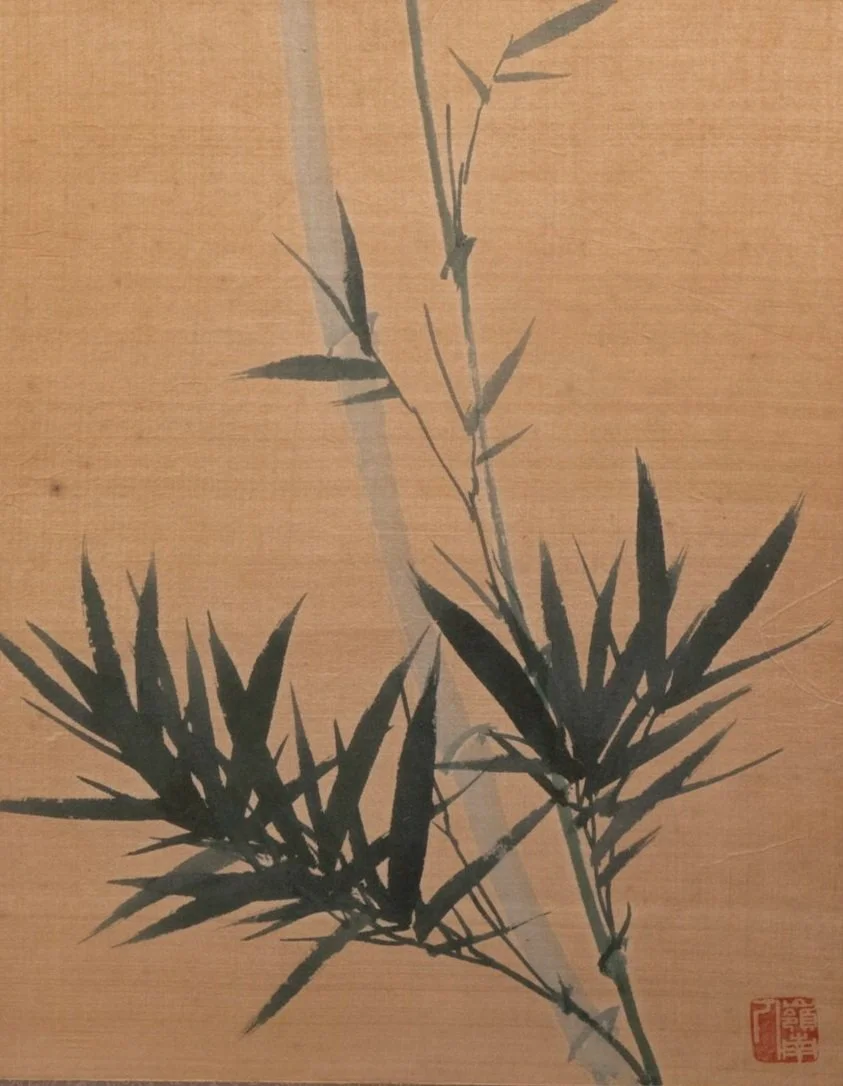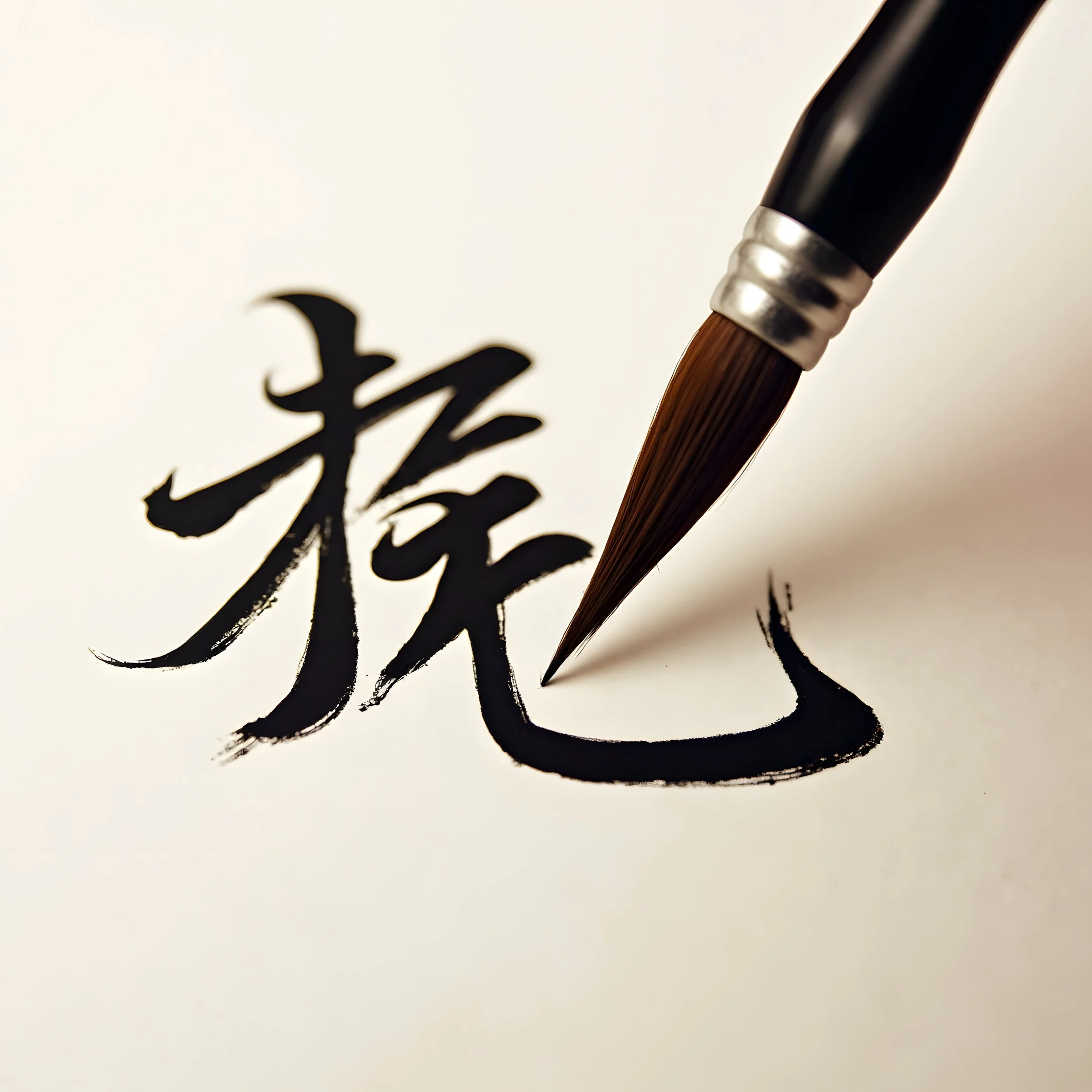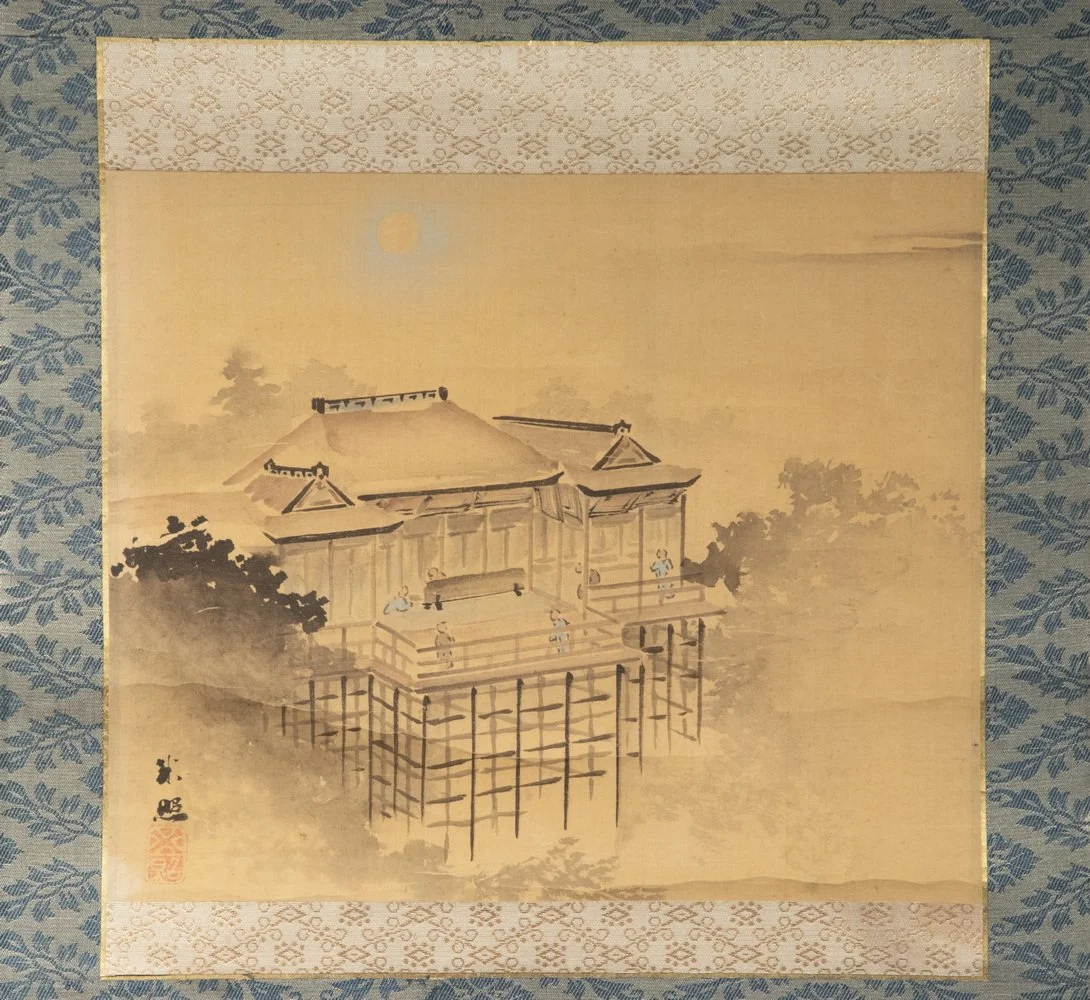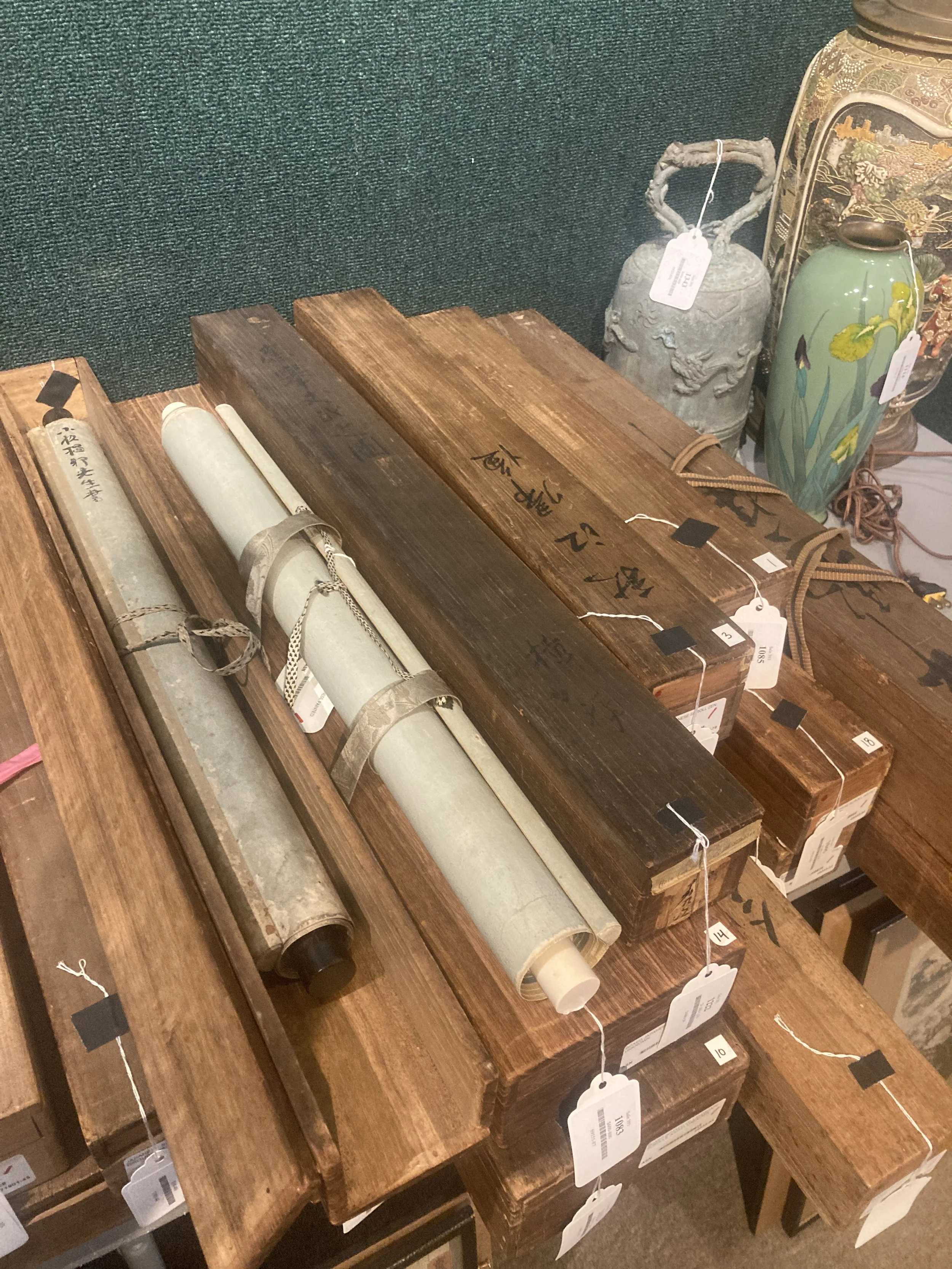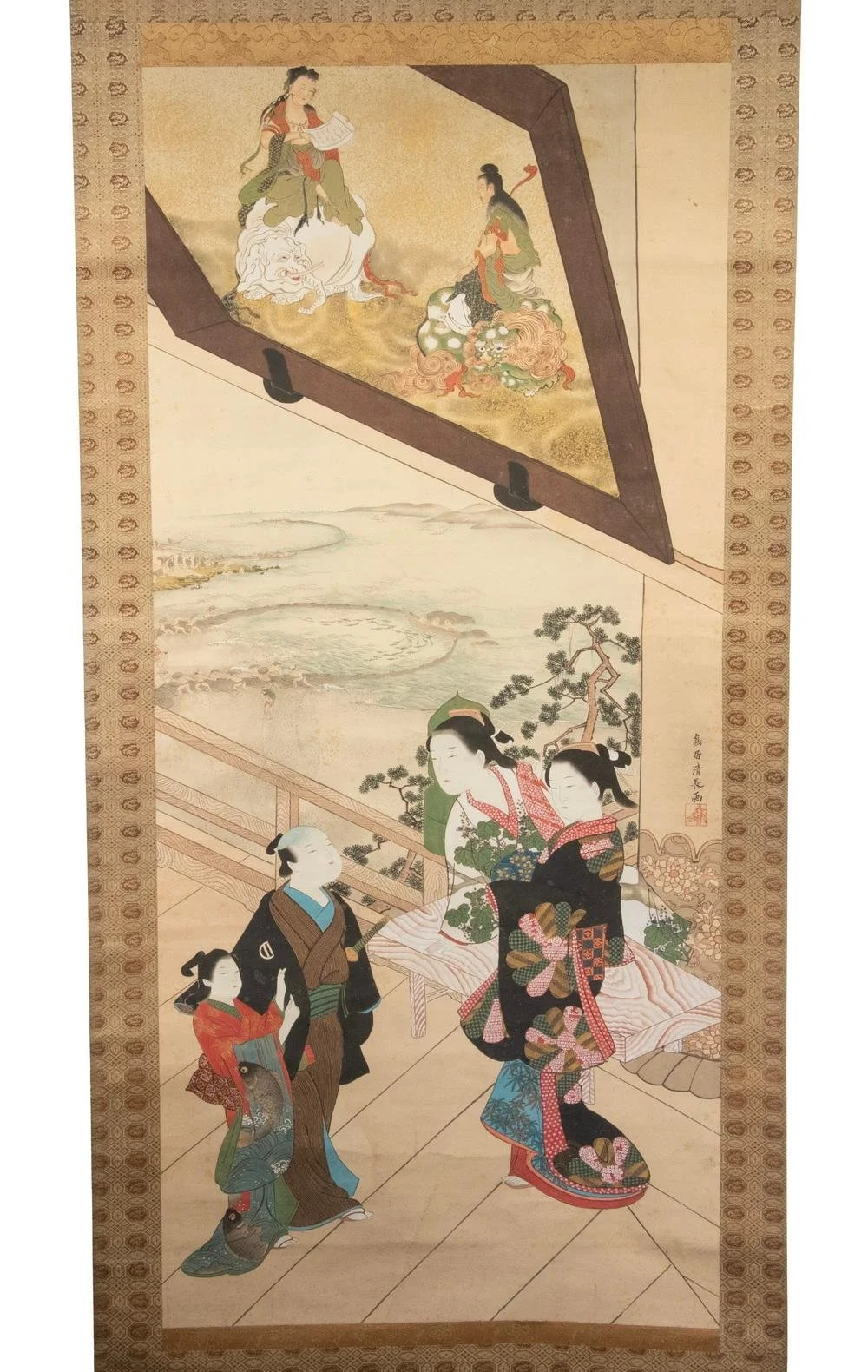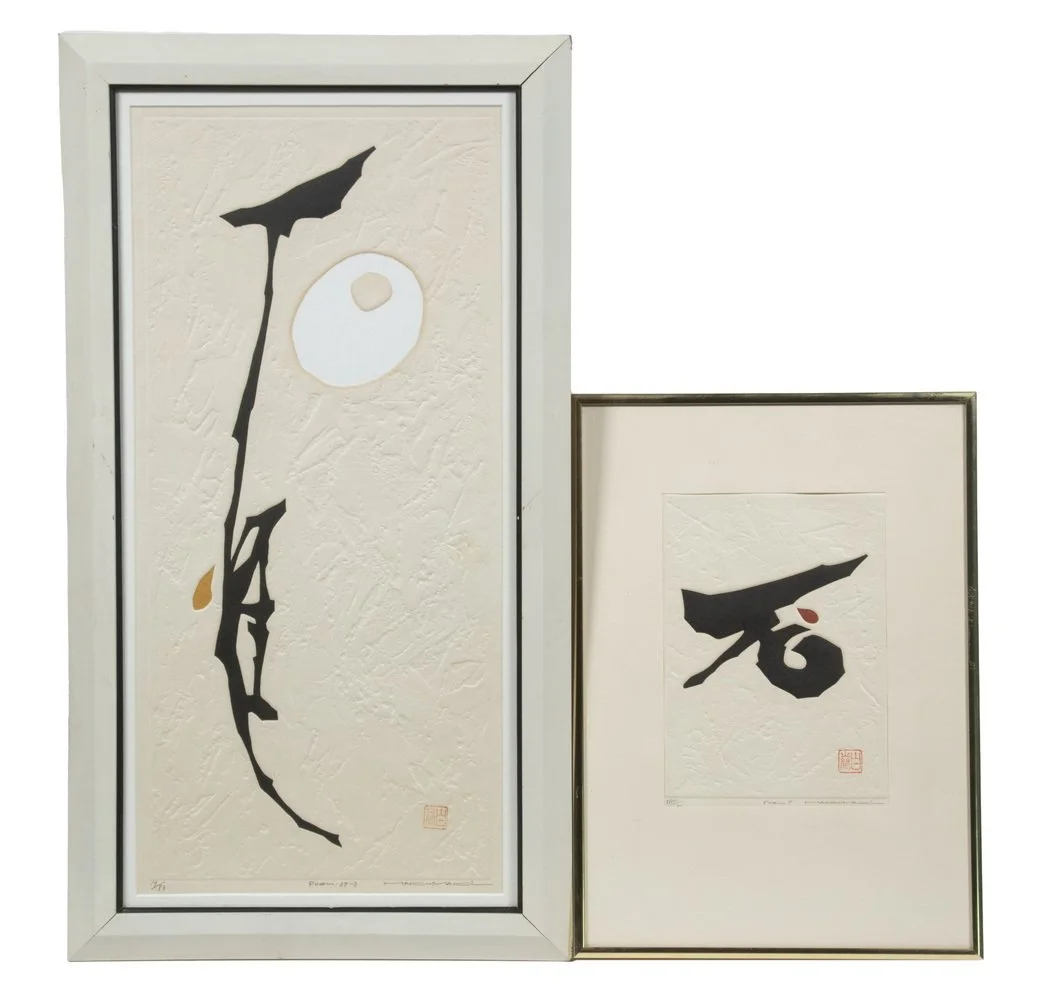Sumi-e: Japanese Brush Painting Examined
Lot 1339
“Before painting a bamboo, it is necessary for the bamboo to grow in your soul. Then, with brush in hand and with eyes focused, the vision will arise. Capture it immediately and sketch it, because it may quickly disappear like a wild rabbit when a hunter is approaching.”
—Master Sung Tung Po
Painting, Technology & The Arts
The most rudimentary element of design is a point in space. Create a path from one point to another, and you have a line. A line can be infinitely various in its quality and what it represents, it can be straight as an arrow, in the form of a wave, thin or thick, undulating, etc.. It is also the fundamental element used to represent anything that we can perceive and describe in the physical world, and, some would argue, the “unseen” one. After all, how could we express the abstract ideas associated with language and mathematics, were it not for the application of the written word, and a number system. The human relationship with mark-making goes hand-in-hand with our ability to communicate, and it extends far into prehistory, when our ancestors were still living in caves. After phonetics, image-making is likely the most important technology responsible for launching humankind into modern civilization.
The legacy of our love affair with lines and mark-making is well-documented on the walls of the caves of Lascaux; it is in the clay tablets of Sumerian cuneiform, and those etched in the Rosetta Stone; it is the very foundation of our logic, and in the shadows at play in Plato’s Cave.
The first image-makers employed various methods for creating lines and images, using readily available pigments and binders found in nature: charcoal, lime, ochre, and other materials were mixed with water, fats, or plant saps. In recent discovery, Karampuang cave in the islands of Indonesia, purported the oldest known paintings in the world, 51,200-year-old anthropomorphic figures interacting with a pig. (See story on BBC) Early techniques involved the use of a painter’s hands—in application, or as a mask — but over time image makers adopted the used of tools held in the hand to make their marks. Evidence of this technology and practice can be found the world over, with each geographical region adapting the use of natural materials available.
Brush Technology
The most primitive tools available were sticks, these were modified into brushes over time with the addition of animal hair, giving painters more control and variability to their lines; it is all prehistory from there!
Some of the most significant advances were the development of different substrates to carry the images, such as clay in Mesopotamia, and Egyptian papyrus. But it was the Chinese who developed techniques that can be credited to what we know as paper today, as well as advances in the employ of ink stick, and brushes, and silk; their technology and influence spread. Chinese brush painting flourished for centuries before reaching the islands of the far east, resulting in highly detailed ethereal landscapes, and elegant calligraphy practiced by monks and scribes. The Japanese readily embraced these technologies when their own culture and ideologies merged with the spread of Buddhist practice and philosophy, and influence from 14th c. mainland China and Korea. And the Japanese made their own contributions, with the creation of Washi paper, and the refinement of the ink stick, or Sumi.
Sumi-e is Japanese, it translates in English to “black ink painting”. It is one of the most revered art forms in Japanese culture, believed to embody the principles of it most celebrated practices. While the masters of Chinese ink wash painting (such as Don Yuan) used variable shades to create very complex and highly detailed images of impressive floating landscapes dating back to the 5th century, called Shan shui.
Dom Yuan (c.932 – 962AD) Xiao and Xiang Rivers — This painting is often considered to be one of Dong Yuan's greatest masterpieces. It is a fine example of the artform.
The Japanese reduced the art form and technology to their most essential form, spare of ornament or embellishments. Japanese Sumi-e is more concerned with the simplicity of the line; the form of painting embodies the same discipline and principles as the Zen monks who introduced it. There is no need for preparation, as in traditional painting, elements are reduced to their simplest form; the sketch is the painting. There are no touch-ups, additions, or decorations that are unessential to enhance a work; unnecessary ornament is seen as obscuring a works true nature.
Lot 1085: Tani Bucho, silk scroll with brocade border
Japanese Sumi-e is more concerned with the simplicity of the line…the sketch is the painting.
In todays market, Sumi-e is highly sought after by collectors, particularly for its simplicity and elegance in style, and mastery of technique. In a September of 2023 at Bonhams, Asa, a work by Japanese artist Inoue Yūichi done in sumi ink on paper, brought $49,000. And a horizontal hanging scroll, Wisteria and Bees by Chinese artist Qi Baishi sold for double its estimate at $445,000. Growing popularity has even led to more widespread adaptations of the form, with American proponents such as artist and conservationist Robert Wyland bringing more commercial contributions to the market, increasing general awareness of the artform in the western world. And there are a multitude of societies artist groups the world over that carry on the Sumi-e tradition, including several chapters in the US, including: The Sumi-e Society of America, and its National Capitol Area Chapter; there is even a chapter in the Midwest.
Scrolls from upcoming sale:
Japanese Art & Antiques - May 2
Brush paintings can be found in many formats: the vertical hanging scroll is a classic format; the long horizontal hand scroll format is another, but there are also larger screens, triptychs, and silk tapestries. They are commonly stored in boxes.
Even up here in Maine, the far reaches of New England, we have seen Japanese brush paintings do quite well at auction, and there seems to be a thriving community of collectors of rare objects from this region. Such as this 19th century, six-panel folding screen from August 2024’s Summer Grandeur. It saw multiple competing bids from various platforms, and brought $40,000, more than twice the high estimate. Our feature sales regularly feature significant contributions of items from throughout Asia and the Indo Pacific regions, and there are inevitably delightful surprises every cycle.
GAKYOJIN HOKUSAI, sold $40,000 - Japan, late Edo period (1603-1868) six-panel folding screen (byobu), ink, color, gofun and gold-leaf. Depicts Hideyoshi Toyotomi's (1536-1599) conquest of Korea in 1592, a roiling battle with hundreds of men under an myriad of arms (including muskets), interspersed among a multitude of clan battle flags with mons. An assault by water is on the right, undefended castle at center and Shogun's marquee to left. (detail)
Our upcoming Japanese Art & Antiques auction at Thomaston Place Auction Galleries in Thomaston, Maine is a perfect example of how this art form can be found alive and well in unusual places. (To learn more about how these objects from the Far East find their way to the shores of Maine, see our previous story on Historic Maine Sea Captains.) The sale also hosts a great deal of classic examples of early Japanese Sumi-e, such as an Edo period figural scroll (lot 1005) by Kano Tan’Yu, ca. 1650, signed with seals and inscription, sumi ink, and watercolor on silk. And this magnificent 6 panel Byobu folding screen from the Edo period, (lot 1126) with cranes and birds painted in sumi ink, pigment gofu, and gold leaf on paper, with integral brocade border.
There are also several elegant examples of calligraphy, most in the impressive hanging scroll format, such as lot 1212, with four column Kanji script of Zen poetry—done in sumi-e ink on paper, this scroll is indicative of what would be hung in a tea ceremony room, and it is a prime example of the simplicity of the form. The auction also includes number of more modern examples in the ever popular Ukiyo-e tradition, (See our companion story on Ukiyo-e) including this colorful boxed brocade scroll by an unknown artist, ( lot 1020) watercolor on silk, signed with seal, in marked kiribaku.
Lot 1020: Boxed Japanese Scroll, Unidentified Artist
Ukiyo-e painting, Family of Four on Veranda overlooking net fishermen in bay, insert upper right of two deities on white elephant and lion, watercolor on silk, signed and with seal, in marked kiribaku, 44 1/2" x 20" image on 79" x 25" brocade scroll.
And the sale includes over 50 woodblock prints in the Ukiyo-e category, including a number of more contemporary approaches to the form, including these two masterful embossed woodcuts by Maki Haku. (lot 1260) And an elegant, embossed etching by Yatoshi Kamora, (lot 1248) These contemporary interpretations of the Sumi-e tradition bring our article full circle in our examination of our love affair with mark making. While our technology and approach to painting and Sumi-e may change, this dialogue ensures that the form remains alive and well, and relevant in an ever-changing world.
Lot 1260: AKI HAKU
Sosaku Hanga Prints, embossed woodcuts on hand made paper, both pencil signed with red seals, based on kanji characters.
With over 500 rare objects hand selected from homes and notable estates throughout New England, our Japanese Art & Antiques auction is sure to please collectors near and far. What treasures could be waiting in hiding in this sale remains to be seen, but undoubtedly, there will be unexpected surprises. Our sales are well attended worldwide, and we offer our clients the flexibility of bidding in-person, by phone, absentee, or online. Join us for Open Preview starting April 29 to view items in-person, register today.
For assistance with bidding and registration, please telephone: +1 (207) 354-8141
Register online at live.thomastonauction.com
For all other enquiries please contact us.

